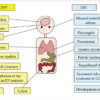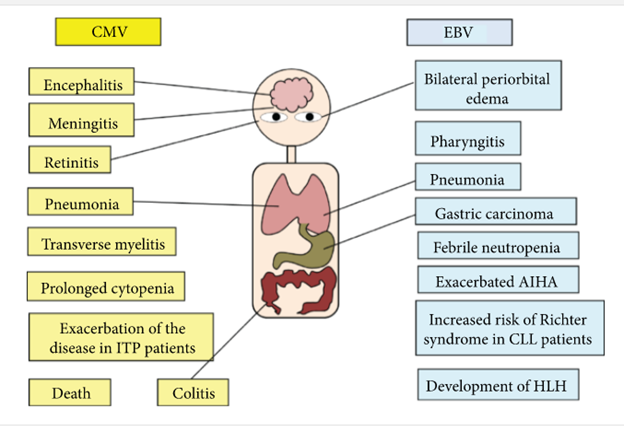Epstein-Barr Virus (EBV) Antibody Profile
$132.00
EBV Antibodies -#86663, #86664, #86665
Epstein-Barr (EB) virus is a herpes group virus that is ubiquitous. It is the cause of classic infectious mononucleosis and is causally implicated in the pathogenesis of Burkitt lymphoma, some nasopharyngeal carcinomas, and rare hereditary lymphoproliferative disorders. The serologic response to EB virus includes antibody to early antigen, IgM and IgG antibodies to viral capsid antigen (VCA), and antibodies to Epstein-Barr nuclear antigen (EBNA).
Herpesvirus-6 (HHV-6) is a member of the Herpesviridae family. These viruses contain DNA surrounded by a lipid envelope. Among members of this group, this virus is most closely related to cytomegalovirus (CMV) and HHV-7. As with other members of the herpesvirus group (herpes simplex virus [HSV] 1, HSV 2, varicella zoster virus [VZV], CMV, Epstein-Barr virus [EBV], HHV-7, HHV-8), HHV-6 may cause primary and reactivated infections subsequent to latent association with cells.(1) Infection with HHV-6 occurs early in childhood. Most adults (80%-90%) have been infected with this virus.
HHV-6 was first linked with exanthem subitum (roseola infantum) in 1998; since then, the virus has been associated with central nervous system disease almost exclusively in immunocompromised patients.(1) HHV-6 is commonly detected in patients posttransplantation. Clinical symptoms associated with this viral infection include febrile illness, pneumonitis, hepatitis, encephalitis, and bone marrow suppression. However, the majority of HHV-6 infections are asymptomatic.(2) The incidence of HHV-7 infection and its clinical manifestations posttransplantation are less well characterized.


